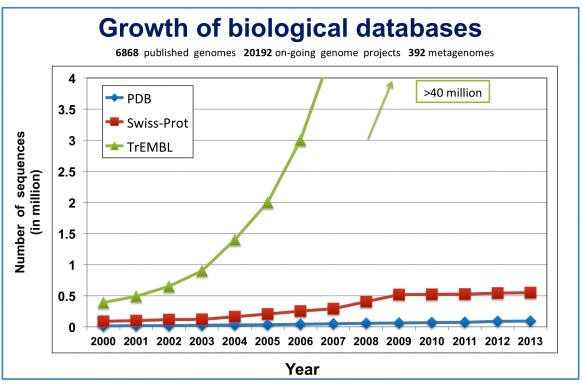E. coli Up Close and Personal: Scientific Rockstar and Public Enigma
This is an article created as guest post for Kitchen Table Science.
It seems nothing puts fear in the hearts of the masses like mentioning E. coli. Most think of the disease-causing germ that contaminates everything from spinach to beef. I agree the strain Escherichia coli O157:H7 and its cousins O26, O145, STEC O104:H4, and others, are a wretched bunch that give the whole species a bad reputation. What makes these strains so vile are the extra proteins encoded within their genome. For example, E. coli O157:H7 has a larger genome coding for 5561 proteins while the parent strain E. coli W codes for 4739 proteins. Thus is the life of a bacterium. The fact there are so many bacteria means they are usually in close proximity to each other. Physical contact between bacteria, not just those of the same species, allows for the transfer of genetic material between two cells (horizontal gene transfer); the closest thing to sexual reproduction you will find for prokaryotes. If the genes transferred to the recipient give it an advantage or new ability that helps it compete and thrive in its environment, they will remain in the genome. Otherwise, they will be discarded after genome compaction.
Most E. coli are completely harmless and, in fact, beneficial. If the general public knew more than what was broadcasted on the 24 hour news channels, they would see the tiny rockstar scientists have known about for some time now. Beginning in earnest in the 1950s, E. coli is easily cultured in laboratories and very cheaply. Its quick generation time (20 min. at optimum temperature) made it a great model organism to study in many fields of science and medicine. This organism is the work horse of biotechnology due to the relative ease of manipulating its genome or adding complete genetic circuits into the cell using plasmids.
Sidebar
Even after 50 years of intense research, E. coli still holds many unknowns out of the reach of our knowledge. Like all other sequenced genomes, there are a number of “hypothetical proteins” and “proteins of unknown function”. This means by our best abilities, we can locate parts of the genome that code for proteins, however, this doesn’t mean we are able to understand the function of a particular protein.
The above shows just how much work is left to understand the biological capabilities of Mother Nature. Short version: over 40 gene sequences in databases, but the number of which that we know what the function is holding steady around 500,000 and the number of solved protein structures is over 100,000. This is a growing gap between the known and unknown.
Where would we be without E. coli?
One advantage of E. coli is their effect on our immune system. Some may find this counter-intuitive, but E. coli can lower the workload of our immune system when pathogens are present, especially in the intestine. When E. coli attach to the GI wall, it changes the acidity of the lining thus making infection from other bacteria less likely. Another benefit is in overall digestion. E. coli promotes better breakdown of food thus preventing accumulation of waste which is a major cause of bloating and constipation.
Many outside the scientific community may not be aware of how integral E. coli are to the advancement of many fields including medicine, pharmacology, biology, and even human physiology. Another reason to not believe the hype.
Related article
- Useful Products Engineered into E. coli “Poop” (Thank Goodness) (mhrussel.wordpress.com)


